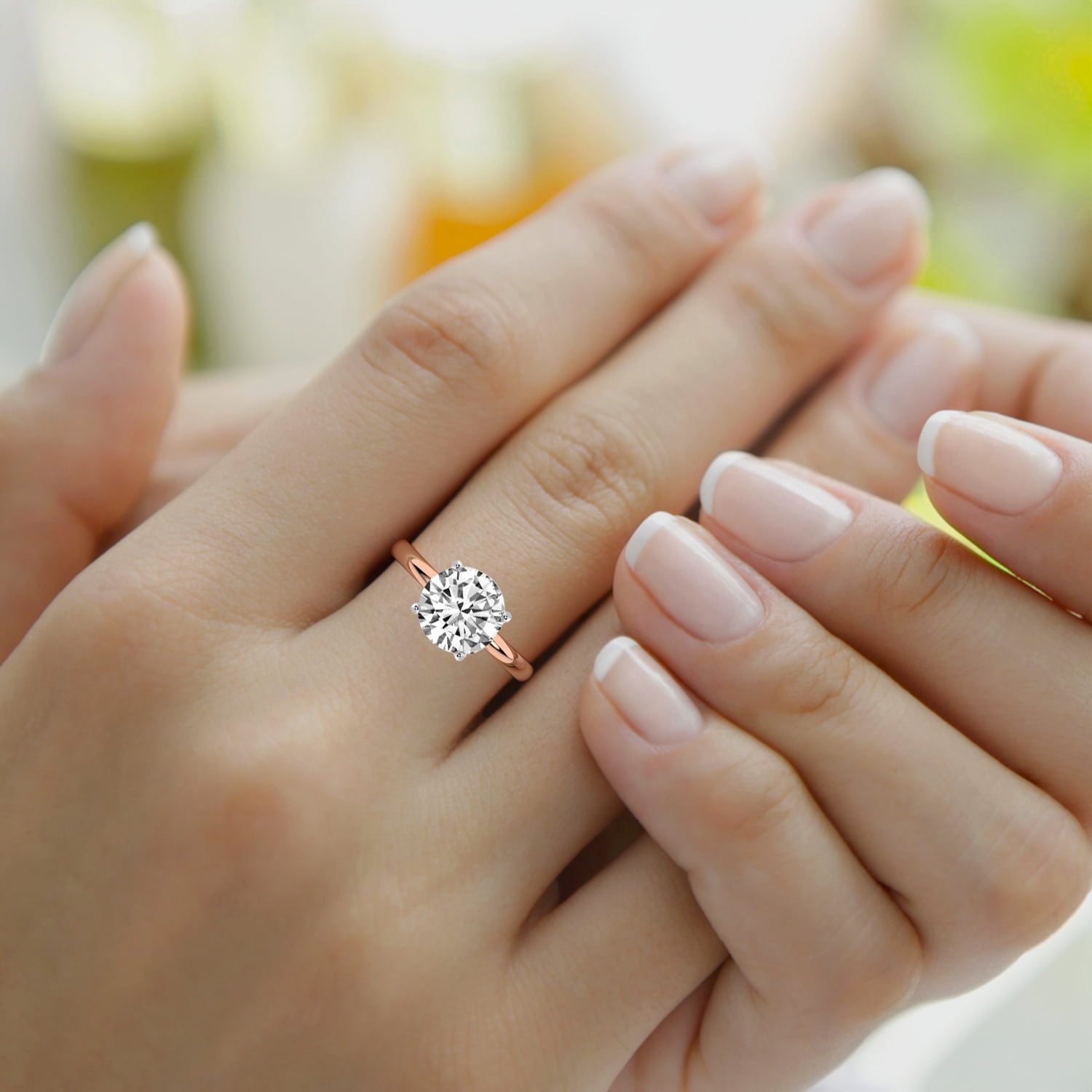In the world of fine jewelry, diamonds and moissanites stand out as two popular choices, each with its own distinct qualities. As lab-grown diamonds gain traction for their ethical and environmental benefits, it’s crucial to understand how they compare to moissanites, another stunning alternative. This article explores the differences and similarities between diamond vs moissanites, delving into their properties, value, and why you might choose one over the other.
What Are Lab-Grown Diamonds?
Lab-grown diamonds, also known as synthetic or cultured diamonds, are created in controlled environments that simulate the natural conditions under which diamonds form. Advanced technologies such as High Pressure High Temperature (HPHT) and Chemical Vapor Deposition (CVD) are used to produce these diamonds, which are virtually identical to natural ones. Lab-grown diamonds share the same physical and chemical properties as their mined counterparts, making them indistinguishable from natural diamonds to the naked eye.
Lab-grown diamonds are composed of carbon atoms arranged in a crystal lattice, exactly like natural diamonds. They exhibit the same hardness, brilliance, and refractive index, ensuring they possess the same stunning visual appeal. These diamonds are graded and certified by gemological laboratories using the same criteria as natural diamonds, ensuring a high standard of quality and authenticity.
What Are Moissanites?
Moissanites are silicon carbide crystals first discovered in a meteorite by Dr. Henri Moissan in the late 19th century. While natural moissanites are rare, most moissanites used in jewelry today are lab-created. Known for their exceptional brilliance and fire, moissanites often exceed diamonds in terms of sparkle.
Moissanites are composed of silicon carbide, which gives them their unique properties. They are highly durable, with a hardness of 9.25 on the Mohs scale, making them suitable for everyday wear. The high refractive index of moissanites results in intense sparkle and a rainbow-like effect, which can be more pronounced than that of diamonds.
Key Differences Between Diamonds and Moissanites
Brilliance and Fire
Both diamonds and moissanites exhibit remarkable brilliance, but moissanites have a higher refractive index compared to diamonds. This higher refractive index means that moissanites can display more fire and sparkle, often resulting in a more vibrant appearance. While this additional sparkle can be appealing to some, others may prefer the classic elegance of a diamond.
Hardness and Durability
Diamonds are renowned for their hardness, being the hardest natural substance known with a rating of 10 on the Mohs scale. This makes them incredibly durable and resistant to scratching. Moissanites, though slightly less hard with a rating of 9.25, are still highly durable and suitable for everyday wear. However, they are not as resistant to scratching as diamonds.
Cost and Value
Lab-grown diamonds are generally priced lower than natural diamonds but can still be quite costly depending on their size, cut, and quality. Moissanites, on the other hand, are significantly more affordable. Their lower cost makes them an attractive option for those seeking a high-quality stone without the high price tag associated with diamonds.
Rarity and Perception
Natural diamonds are often seen as traditional and carry significant cultural and emotional value, especially in the context of engagement rings. Lab-grown diamonds, while identical in properties to natural diamonds, may not carry the same level of prestige. Moissanites, being less common and associated with innovation, offer a modern alternative that appeals to those seeking something different from traditional gemstones.
Environmental and Ethical Considerations
lab grown diamonds are regarded as a more ethical and environmentally friendly choice compared to mined diamonds, which can be associated with conflict and environmental damage. Moissanites also offer a sustainable option, as they are primarily lab-created and do not require mining. Both options are appealing to those concerned about ethical sourcing and environmental impact.
Choosing Between Diamonds and Moissanites
The decision between diamonds and moissanites ultimately depends on personal preferences and priorities. If you value traditional elegance, are willing to invest more, and prefer a gem with a timeless appeal, a lab-grown diamond might be the right choice for you. However, if you are looking for a more affordable alternative with exceptional brilliance and modern appeal, moissanites are a compelling option.

